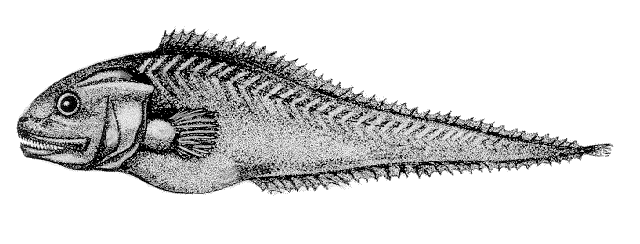| Ophidiidae (Cusk-eels), subfamily: Brotulotaeniinae |
| 32 cm SL (male/unsexed) |
|
bathypelagic; marine; depth range 0 - 2650 m |
| Atlantic Ocean: Bermuda, Gulf of Mexico, Caribbean. Unusual occurrence from Flemish Cap bank. One record from northwest of Spain. Also known from the Indian Ocean (Ref. 34024). |
|
Dorsal spines (total): 0-0; Dorsal soft rays (total): 79-84; Anal spines: 0-0; Anal soft rays: 58-64; Vertebrae: 63-66. Scales small, non-imbricate prickles; opercle with no spine; median basibranchial tooth patch absent; gill rakers are tooth-bearing tubercles; otolith very small and rounded; precaudal vertebrae 12-15 (Ref. 34024). Head and body black (Ref. 31173). |
| Uncommon species (Ref. 34024). Reproductive strategy possibly similar to other members of this family featuring oviparity, with oval pelagic eggs floating in a gelatinous mass (Ref. 205). |
|
Least Concern (LC); Date assessed: 11 October 2018 Ref. (130435)
|
| harmless |
Source and more info: www.fishbase.org. For personal, classroom, and other internal use only. Not for publication.

